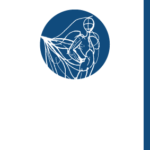Abstract
In this treatise we intend to deepen the theme of Acute Myocardial Infarction (AMI), one of its main risk factors at the cardiovascular level, namely smoking, and in particular, deepen the role of the nurse in patient education. after the ischemic event and implement strategies aimed at smoking cessation. If we look at the data from the World Health Organization (WHO), it is striking that the main cause of mortality in the modern world is heart ischemia which alone causes 7 million and 400 thousand deaths; while in second place we find stroke and cerebral vasculopathies with 6 million and 700 thousand deaths (Cesta 2014). Having established that tobacco plays a primary role in our society and that its active or passive use has a negative impact on the health of the individual (WHO 2014), we will first briefly mention the anatomy and physiology of the cardiovascular system, then we will discuss the implications between heart and smoking and, in particular, between heart attack and smoking, trying to understand - through authoritative sources such as the WHO and databases - where the roots of such a widespread habit lie and its impact on the system cardiovascular. Later we will address the educational issue of secondary prevention, we will examine the strategies implemented for smoking cessation. By dealing directly with patients, acquaintances and friends we realized how, despite the widespread information on the dangers of smoking, several people, even knowing the possible consequences, not only do not try to quit smoking, but almost underestimate the damage that can be caused by this “dangerous” habit of theirs is paradoxical. We believe that the role of the nurse in the post-heart attack moment is of extreme importance not only to provide specific direct assistance, also because that relationship of trust is created and to make him understand the risks to the patient in case he decides to continue smoking, but also because a correct education and the use of some strategies, personalized to each patient, to quit smoking, are essential in reducing the risk of a relapse. The choice of the topic dealt with in this work was dictated by a strong SOCIAL motivation. Although I am a smoker, noting the importance and the close relationship between health and a habit such as smoking, I have always been interested in being able to deepen my knowledge on the effects of the cardiovascular system and the problems that orbit around it. We still believe that an in-depth study on an issue so debated today and which will still be discussed for a long time can give the opportunity to approach smoking patients in a more conscious, personalized and adequate way and thus making treatment a better means. comprehensive within the health sector.
We believe that this work can enhance our personal and professional background, allowing us in the near future to prevent, identify and deal more effectively with clinical problems involving both doctors and nurses. Finally, the hope is to acquire greater critical capacity in problematic cardiological situations and to have a greater capacity for acceptance and respect for the patient’s will. This work aims to highlight and deepen the cardiovascular problems secondary to the phenomenon of smoking, implementing a therapy for smoking cessation. The methodology is based on articles researched from databases, on journals specialized in cardiology and on textbooks. From the observed articles it emerged that the nurse must use a multisystemic , multifaceted and multidisciplinary approach that includes different roles, namely: member of a working group, role of health promoter, role of teacher and communicator, of educator and expert in nursing care , and taking a look at post-ischemic nursing care. In this treatise we intend to deepen the issue of Acute Myocardial Infarction (AMI), one of its main cardiovascular risk factors, namely smoking, and in particular, deepen the role of the nurse in patient education after the ischemic event and in implementing strategies aimed at smoking cessation. If we look at the data from the World Health Organization (WHO), it is striking that the main cause of mortality in the modern world is heart ischemia which alone causes 7 million and 400 thousand deaths; while in second place we find stroke and cerebral vasculopathies with 6 million and 700 thousand deaths (Cesta 2014). Having established that tobacco plays a primary role in our society and that its active or passive use has a negative impact on the health of the individual (WHO 2014), we will first briefly mention the anatomy and physiology of the cardiovascular system, then we will discuss the implications between heart and smoking and, in particular, between heart attack and smoking, trying to understand - through authoritative sources such as the WHO and databases- where the roots of a widespread habit and its impact on the cardiovascular system lie. Later I will address the educational issue of secondary prevention, I will examine the strategies implemented for smoking cessation. By dealing directly with patients, acquaintances and friends we realized how, despite the information seems to be more than abundant on the dangers of smoking, several people, even knowing the possible consequences, not only do not try to quit smoking, but underestimate in the damage that can be caused by this “dangerous” habit of theirs is almost paradoxical. We believe that the role of the nurse in the post-heart attack moment is of extreme importance not only to make the patient aware of the risks in case he decides to continue smoking, but also because proper education and the use of some strategies, customized to each patient, to quit smoking, are essential in reducing the risk of a relapse.

This work is licensed under a Creative Commons Attribution-NonCommercial-NoDerivatives 4.0 International License.
Copyright (c) 2022 Journal of Advanced Health Care





